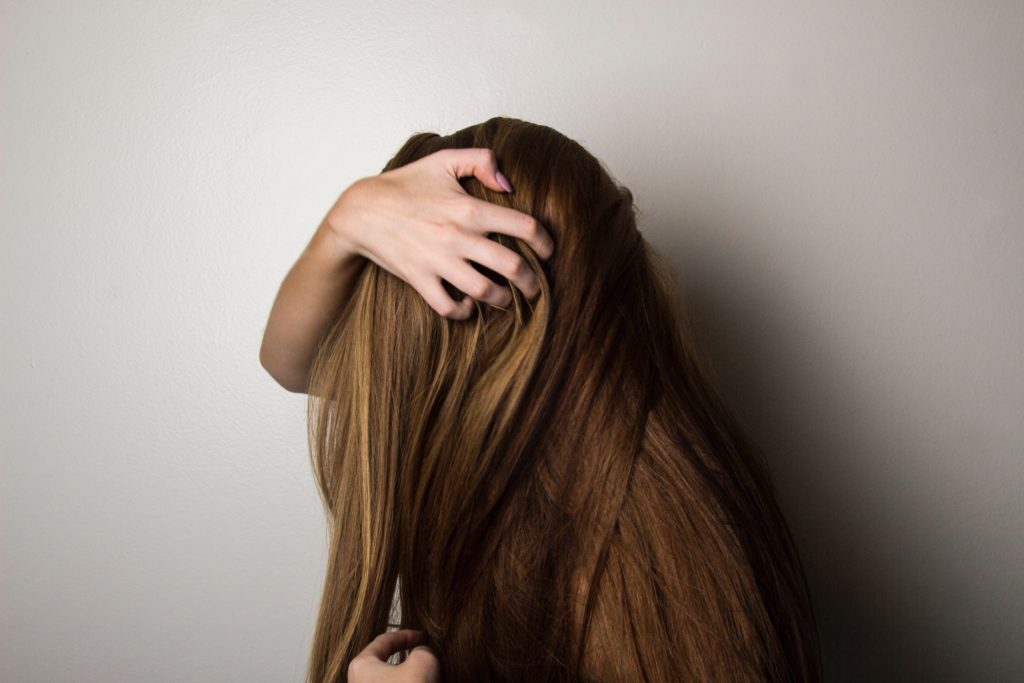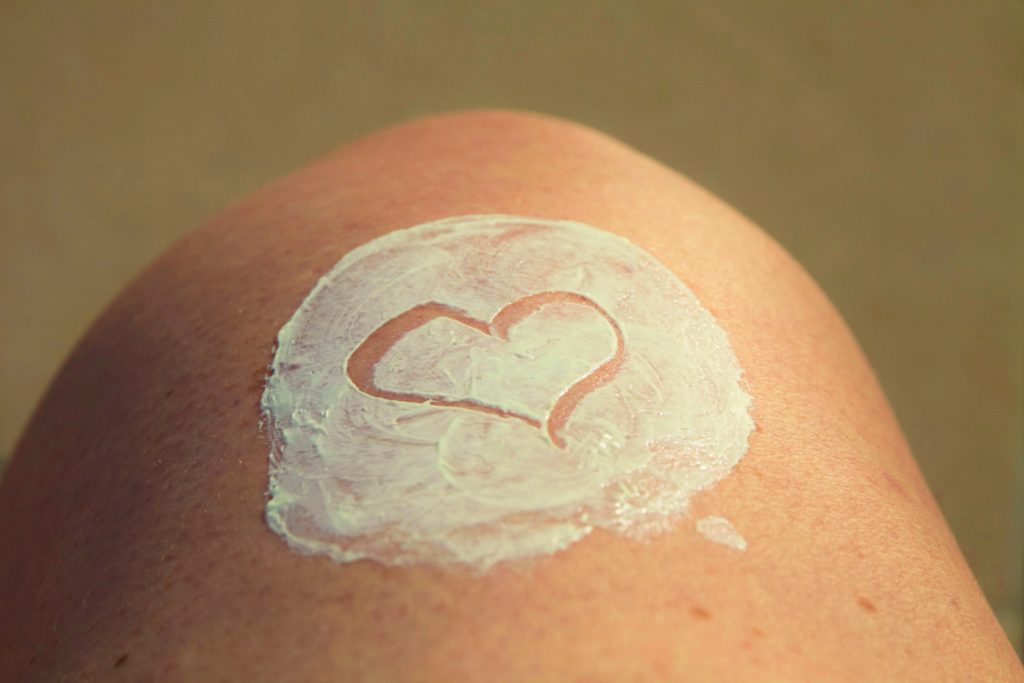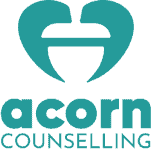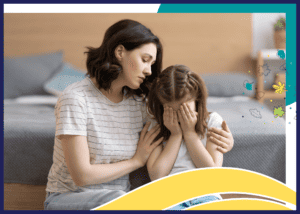Have you ever pulled out a stray hair, or picked a scab, or popped a pimple? If you are like most humans, then of course you have.
But what if you pulled a LOT of hair, from various areas on your body? Or spent a whole lot of time focusing on getting your skin looking perfect, only to realize you actually did some damage? What if you actually tried to stop, but can’t?
If you feel distressed by this picking and or pulling behaviour, want to stop, and can’t, then you might have something called a Body-Focused Repetitive Behaviour, or BFRB for short. Everyone picks or pulls sometimes, even animals. But if you want to stop and can’t, then it may be more than a bad habit: it may be a disorder.

BFRBs are a group of behaviours that include individual disorders: hair pulling is also known as Trichotillomania; skin picking is known as Dermatillomania, or Excoriation Disorder. Nail biting is known as Onychophagia. There are other lesser known behaviours that also fall into this category, including cheek biting, cuticle biting, and hair eating (Trichotillophagia).
BFRBs affect 2-5% of the population. It is a disorder that makes people feel very shameful and secretive, so having a concrete number of people affected is impossible. We also know that this disorder affects more women than man, with statistics showing 90% of those affected are women. We also know that more than half of those people who struggle with this also have other mental health concerns, such as anxiety, depression, and substance misuse.
BFRBs don’t only affect adults. Children and teens are also prone to developing skin picking or hair pulling disorders. There have even been documented cases of “baby-trich” in babies as young as 5 months old. When children pull their hair, it can be quite distressing and confusing for parents. Parents can become stressed or extremely focused on the behaviour, which can worsen hair pulling for kids.
You may have talked to your doctor about it, or even a dermatologist, and were met with silent stares, confusion, or shrugging it off as a bad habit. Sometimes, even professionals respond as if it was just a bad habit, not really being quite sure what to do. They don’t understand that you can’t just stop!
Luckily, there is treatment available.
There have been a number of different treatments that address BFRBs. One of these is known as Habit Reversal Training. HRT focuses on the motor aspects of the behaviour, like the hand going up to the face. This treatment has three main parts: learning to become aware of the behaviour, reducing the tension before the picking or pulling behaviour (relaxation, deep breathing), and learning other body movements to use instead of the picking or pulling.
HRT is effective, and there is some scientific support for it, however it is not enough.
The best treatment to date is called Comprehensive Behavioural model, that goes into great detail about things like:
- Environment: where are you when you pick/pull the most
- Motor functions: do you hands naturally now find themselves as spots you pick, or do certain activities like reading or watching TV almost cause picking
- Sensory: do you feel that you just need to, that the sensations in your body are driving you to pick/pull
- Cognitive: do you tell yourself, “just one” or believe that things need to be perfect
- Emotional: do you tend to pick/pull to relieve tension, or when you are stressed, or sad
Everyone is different! And everyone will have a different combination of these driving factors. This also means that treatment will look different for everyone.
There are common themes to treatment, however, and things that you can start doing on your own right now. These are also things that I incorporate into treatment of BFRBs for those who need additional support.
Here are 5 things that you can do to start getting control of your BFRB.
1. Understanding
The picking or pulling behaviour is actually meeting a need. It might be a need from a long time ago, that has since become a response you have gotten used to, and one you use all the time without thinking. Think about when this first showed up.
Learning about BFRBs in general may help you understand what the behaviour is, what it is helping you with, and what it looks like for you compared to other people. Hearing that others also do this, and that even animals engage in various degrees of “grooming behaviour” can help you feel a bit more “normal” and that you are not alone. This website has some great information: www.bfrb.org
2. Tracking
Pull out a journal, or make a chart, and start writing down each and every time you pick. Yes. Every time. Where were you? What were you doing? Who else was around? What time of day was it? How were you feeling emotionally? How was your body feeling? What was going through your mind? Everything that you can think of. And yes, actually write it down.
Writing things down helps us look at it in a different way, and begin to notice patterns without having to hold all the information in our minds. You may notice something you didn’t know before.
The more you get to know your BFRB, the better equipped you will be to start making changes.
Furthermore, because sometimes people pick or pull without being aware that they are doing it, writing it down and seeing it for a fact will help make that connection, and you may start noticing or catching yourself when you pick or pull unconsciously.
3. Mindfulness
Mindfulness, and mindful awareness, is a huge component of treatment. Here you will begin to become aware of your triggers, urges, when you are doing the behaviour, where you are when you are picking or pulling, and what may be underneath the behaviour. The journaling and tracking is a great first step to building awareness. The next step will be in training your mind to be present; to actually pay attention, on purpose, to what you are doing.
With this mindful awareness, you will develop an ability to make better choices. You will begin to notice your thoughts and feelings, without judgment. You will begin to be able to tolerate uncomfortable feelings, resist urges, and make decisions in response to your world, without reacting or on auto-pilot. You will begin to notice when you might want to pick, and make changes before your find yourself in front of a mirror.
There is so much research and evidence about all the ways that mindfulness can be helpful. It is why mental health professionals, and even health care professionals are encouraging developing a practice. It works, because it retrains your brain.
If you don’t know much about mindfulness, you can find a good introduction here. There are tons of videos online, and apps that you can download. I have recommended some in my downloadable resource you can access here. I highly recommend Insight Timer, Calm, and Stop, Breathe and Think. Pick one that works for you, and make an effort to start practicing on a regular basis.
Relaxation training and deep breathing were mentioned above in the Habit Reversal Training section of this blog. These have been huge parts of treatment for BFRBs for a long time. Relaxation and deep breathing are aspects of mindfulness.
Whether you are new to mindfulness, or have an established practice, making time for a “formal” practice is important. This means that carving out even 5 minutes a day to sit down and focus on breathing and relaxation can have a positive effect. Once your body learns how to relax through regular practice, you will be able to more easily relax when things become stressful or tense.
So when you notice that you have the urge to pick/pull, or are tense, or are stressing out, breathing deeply for 1-2 minutes can help you calm down and make choices about what to do next.
4. Acceptance
Your BFRB likely started a long time ago, and as mentioned above, there might have been an underlying need that it was helping you with. Accepting the behaviour for what it is, for what it has done, may sound counter-intuitive, but it can help you stay on track to make changes. Let me explain.
Acceptance is the first part of making any changes. Without acceptance, there is resistance, and the energy spent trying to resist something leaves little room for actually changing it. When you can look at the “problem”, whatever it is, and say “Okay, you are here. I see you,” then you are free to make changes and think of ways to overcome it.
The biggest piece about acceptance is about accepting yourself, just as you are. You are not your BFRB! You are a loving, creative, wise being. You are full of life, and potential, and you do amazing things. And, you also happen to have this little thing that sometimes creeps up and sabotages your time, energy, and appearance, and then leaves you feeling guilty and ashamed. You are human, and you are worthy of love and belonging, regardless of your flaws.
If this is sounding foreign, I encourage you to explore self-compassion, or look at this website: https://self-compassion.org/ Self-compassion is about learning to treat yourself like you would treat a friend who is having a hard time.
5. Substitute the behaviour
Everyone’s BFRB manifests differently. Because you have taken the time to get to know yours, you will notice what draws you to pick or pull. Was it a thought upon seeing an imperfection? Was it the sight of a bump? Do you feel overwhelmed or stressed? Are you just zoning out or watching TV and not even noticing you are pulling or picking?
Whatever is going on for you, there are a number of tools that may be helpful, or things that you can do instead. This part of developing a competing response. Some of these things include:
- Fidget toys! There are SOO many to chose from. Keep these in different places in the house so that they are easy to reach. It may be a good idea to have some variety of toys, maybe 2-3 in each basket. Have one in your hand at all times
- Sensory input items. These are things like head massagers, feather boa, or baby hair brushes that can provide sought after sensations without causing damage.
- Block your ability to follow through. This can involve things like wearing gloves, taping your fingertips, or wearing a hat.

Depending on how your BFRB works, usually a combination of interventions and changes are going to be most helpful. This can also be confusing and overwhelming, especially when trying a number of different intervention or strategies without fully understanding how your BFRB works.
Stopping completely is a lofty goal, and perhaps not completely realistic. After all, we talked in the beginning of this how everyone picks or pulls sometimes, humans and animals.
More realistic goals would be around disrupting the compulsive patterns that draw you to pick and pull, and help you by:
- Gaining better control over the behaviour
- Limiting how much you are picking or pulling
- Decreasing the damage to your body that picking and pulling is causing
- Decreasing how much time and energy go into this behaviour
- Learning to be free to choose when you want to pull a stray hair, or pop a pimple, and stopping when you choose to
There is help! There are trained professionals that can help you meet your goals and gain control over your BFRB. I have had additional and extensive training to help you overcome this distressing behaviour. With someone on your team, we can explore and get to know the picking/pulling part of you, and empower you to make changes to ultimately get better control over the BFRB.
Services are available for children, teens, and adults.
For more information or to book an appointment, email [email protected]



